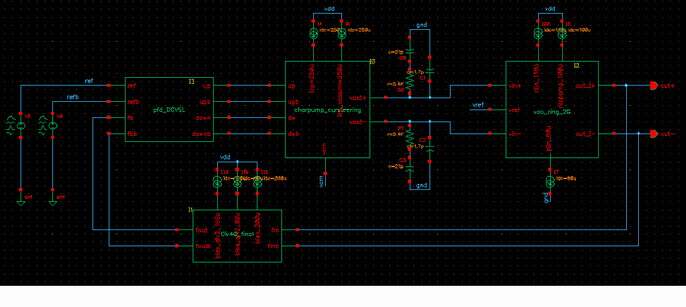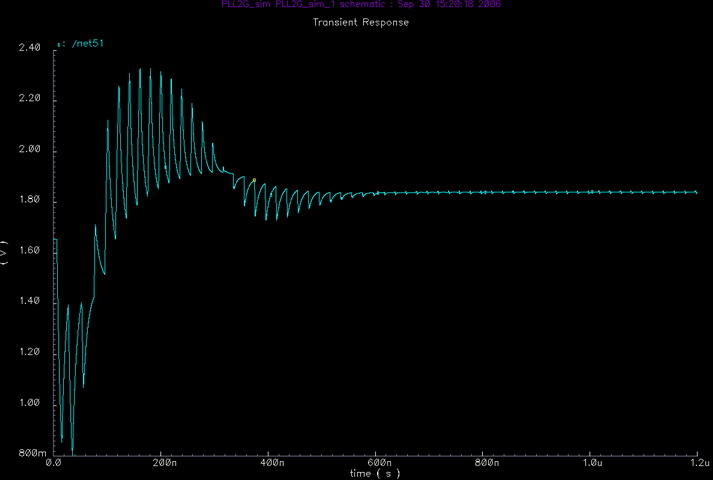chenmy
Junior Member level 2
relative harmonic pnoise
Hi everyone ,a problems of analysing the PLL phase noise with PSS+PNOISE in spectreRF:
The input refrence is 50MHz and the output is 2GHz with a divider ratio of 40
First I do PSS and set the 'Beat frequency' into 'Auto caculate' (the default Beat Frequency is '50M',which is equal to the input reference frequency)and I set the 'Number of hamonices' into '40'.
Then I do PNOISE ,and in order to see the phase noise near the output frequency of 2GHz,I set the 'Sweeptype' in PNOISE into 'relative' and the 'relative Harmonic' into '40' .
I found the result is not correct,because at frequency more than 10MHz the PLL phase noise got by the above method is even smaller than the VCO phase noise,which is impossible.
Is my PSS+PNOISE setting correct? What should be the correct way of setting PSS+PNOISE if I want to see the output phase noise whith a divider ratio larger
than 1? Thanks a lot!!
Hi everyone ,a problems of analysing the PLL phase noise with PSS+PNOISE in spectreRF:
The input refrence is 50MHz and the output is 2GHz with a divider ratio of 40
First I do PSS and set the 'Beat frequency' into 'Auto caculate' (the default Beat Frequency is '50M',which is equal to the input reference frequency)and I set the 'Number of hamonices' into '40'.
Then I do PNOISE ,and in order to see the phase noise near the output frequency of 2GHz,I set the 'Sweeptype' in PNOISE into 'relative' and the 'relative Harmonic' into '40' .
I found the result is not correct,because at frequency more than 10MHz the PLL phase noise got by the above method is even smaller than the VCO phase noise,which is impossible.
Is my PSS+PNOISE setting correct? What should be the correct way of setting PSS+PNOISE if I want to see the output phase noise whith a divider ratio larger
than 1? Thanks a lot!!

